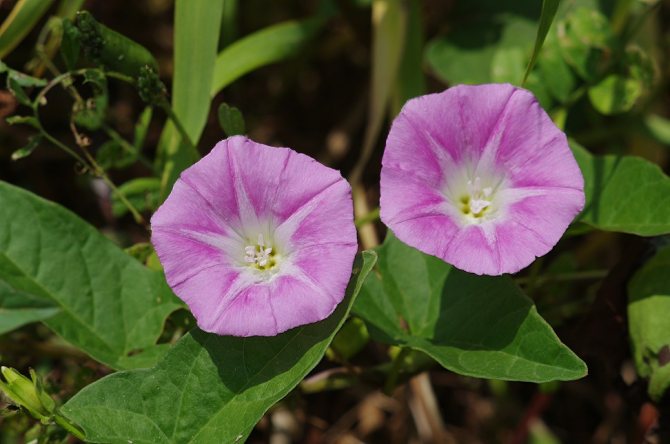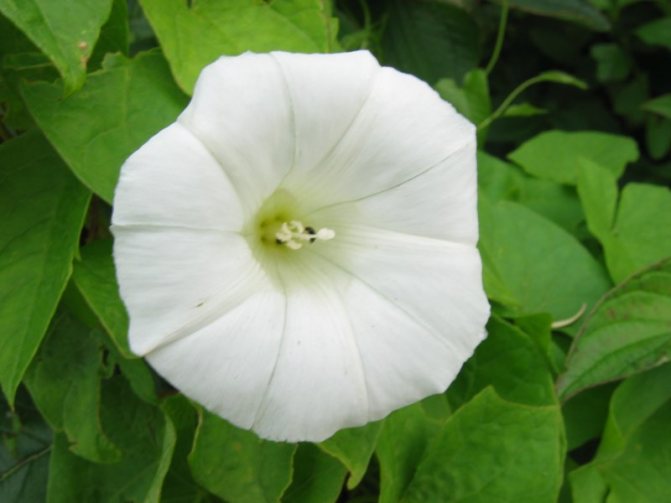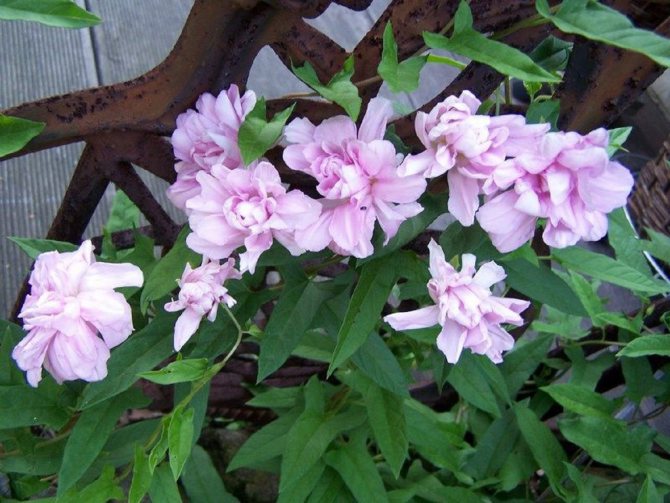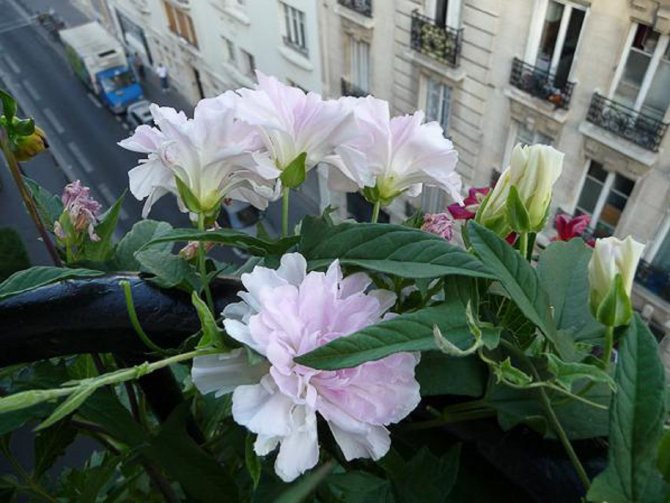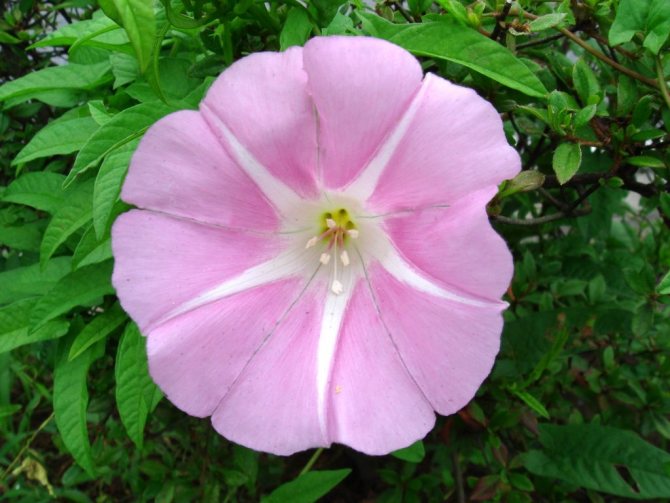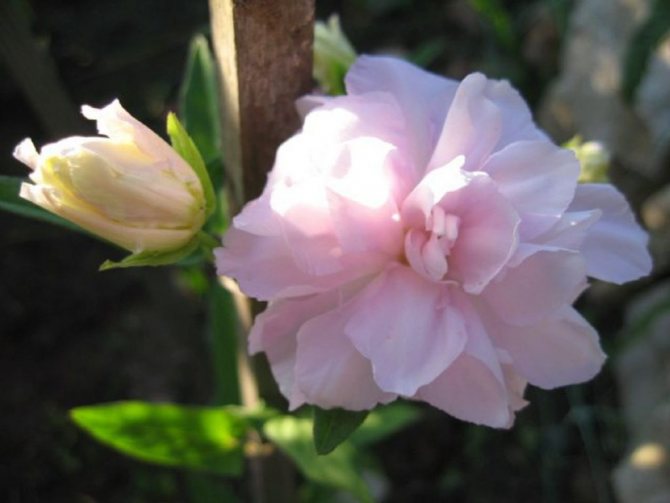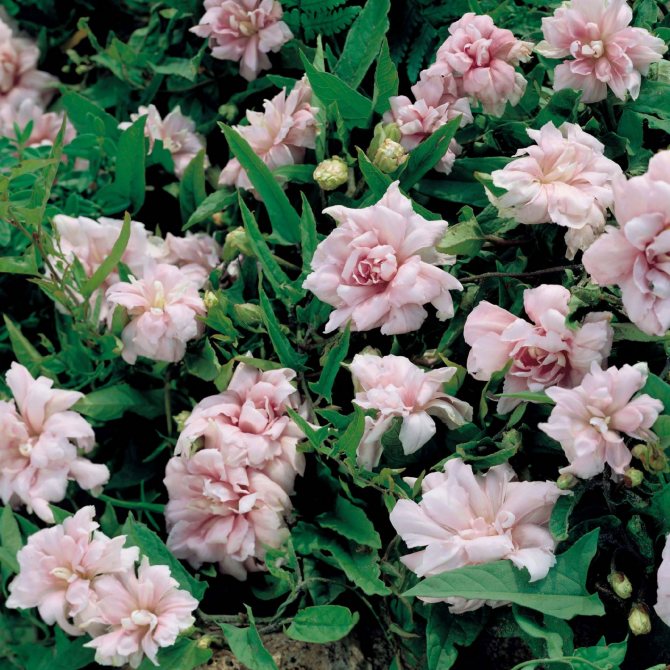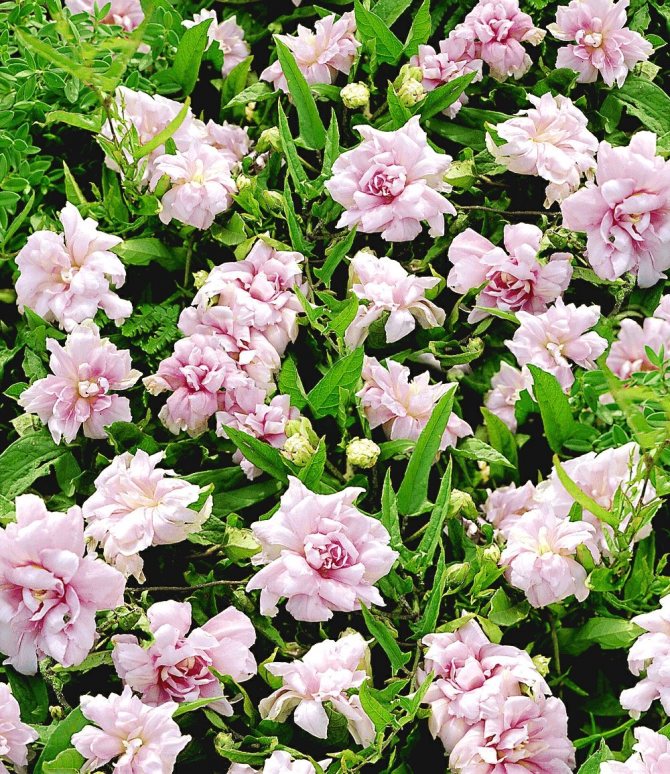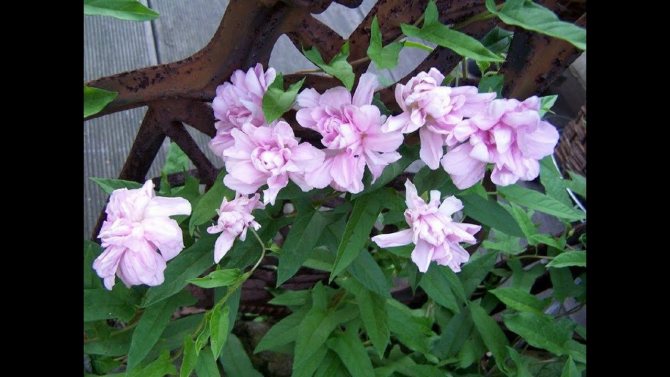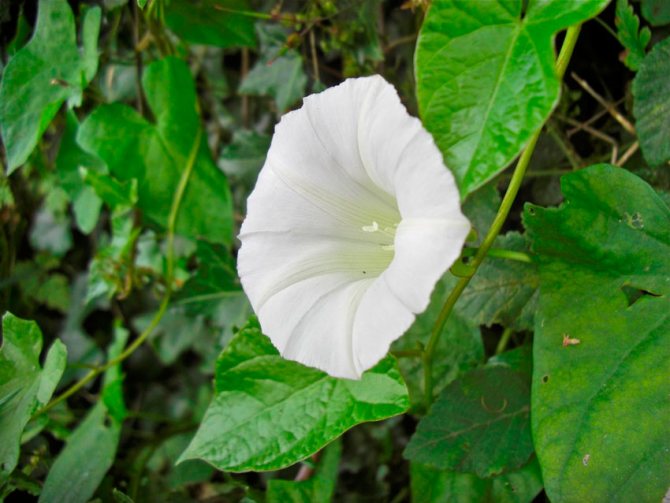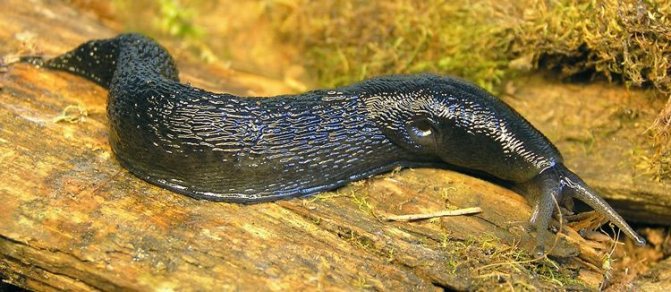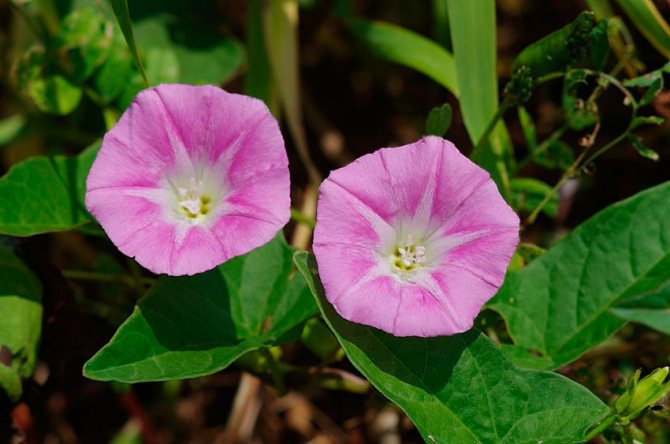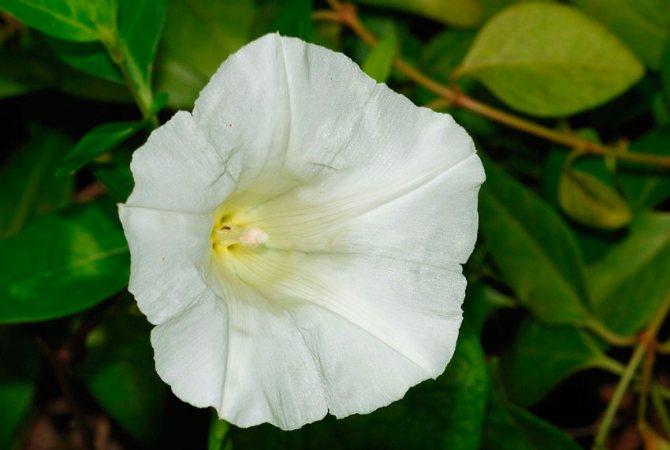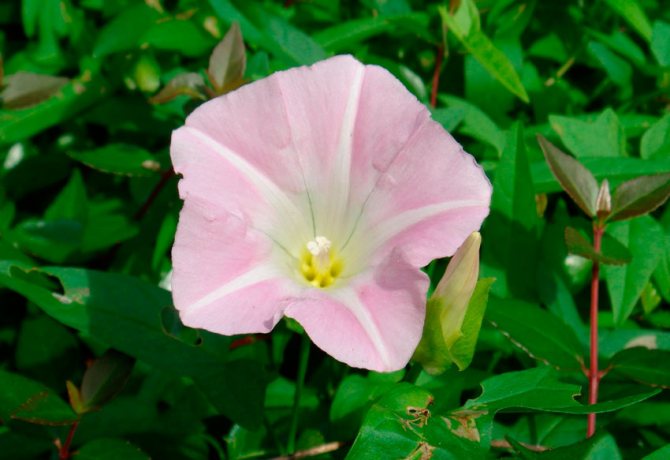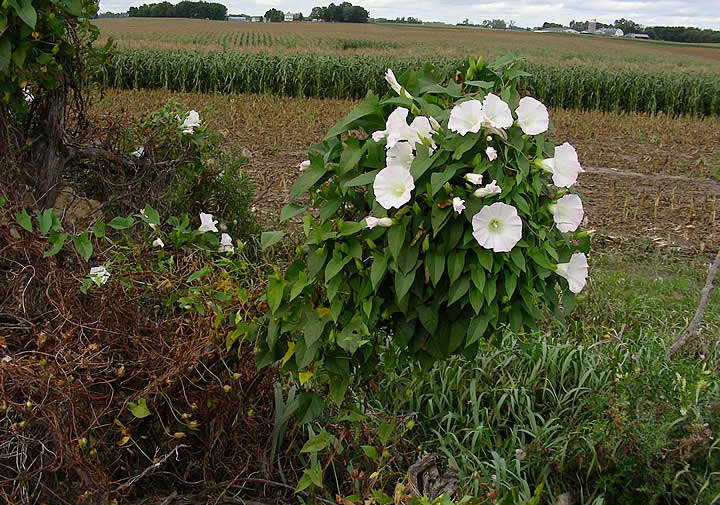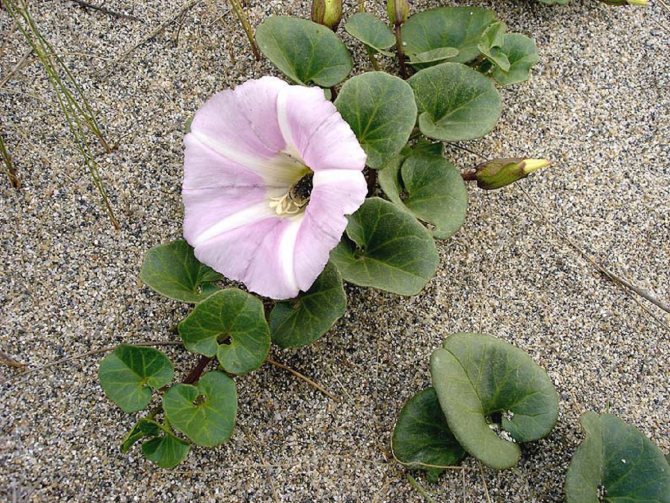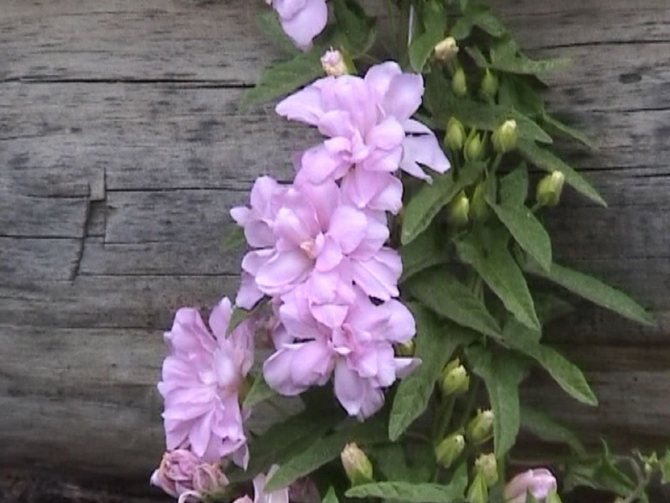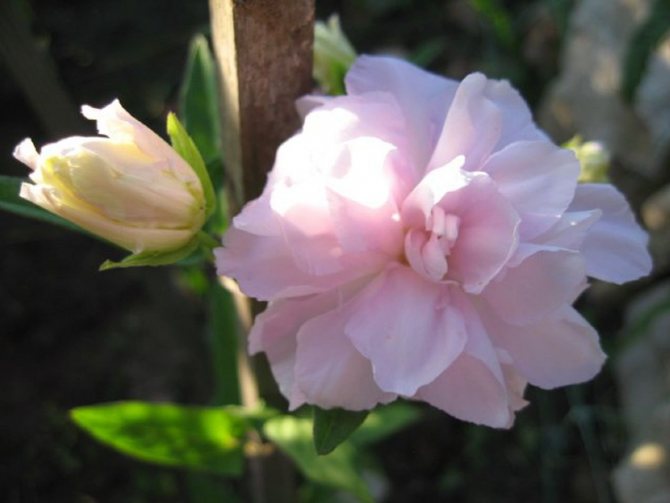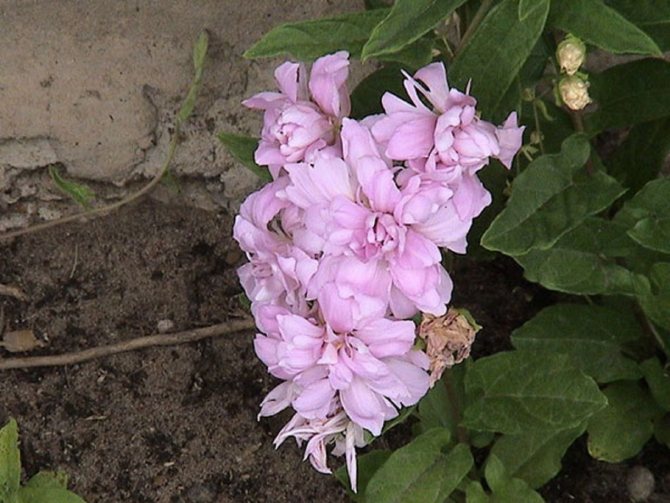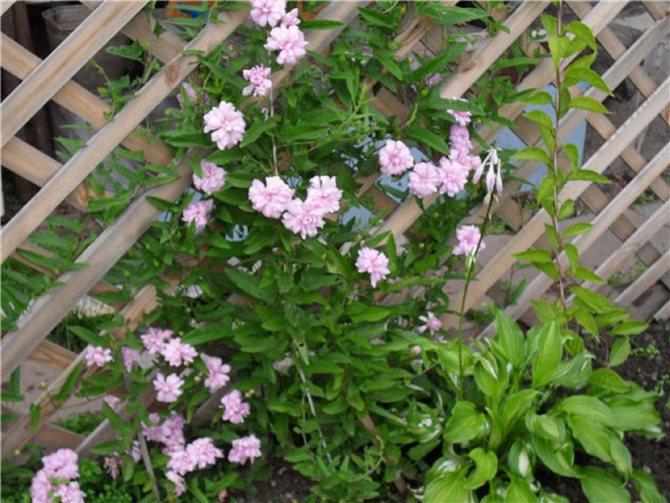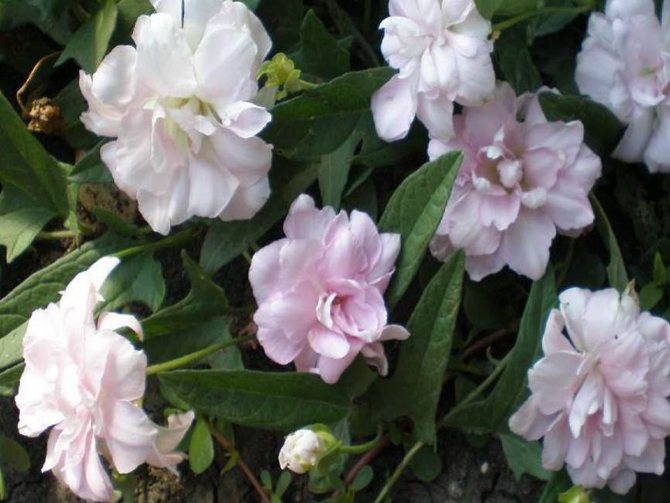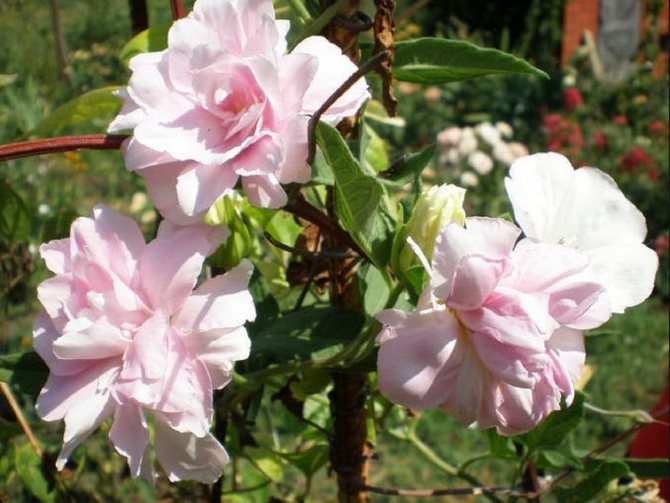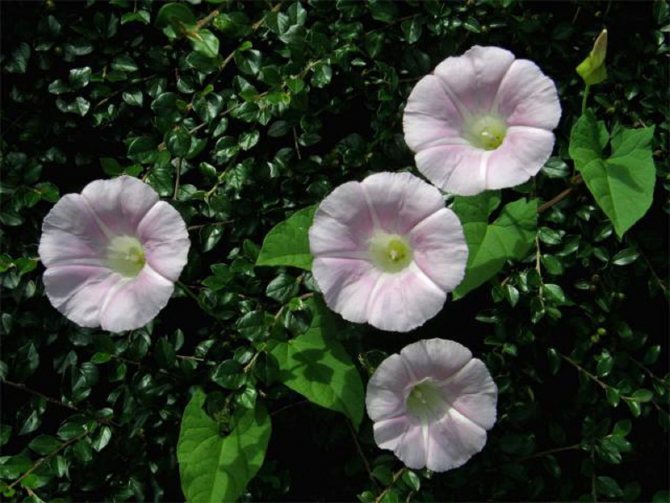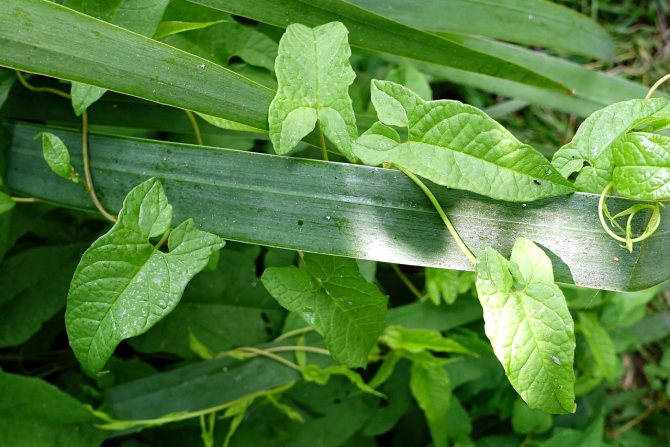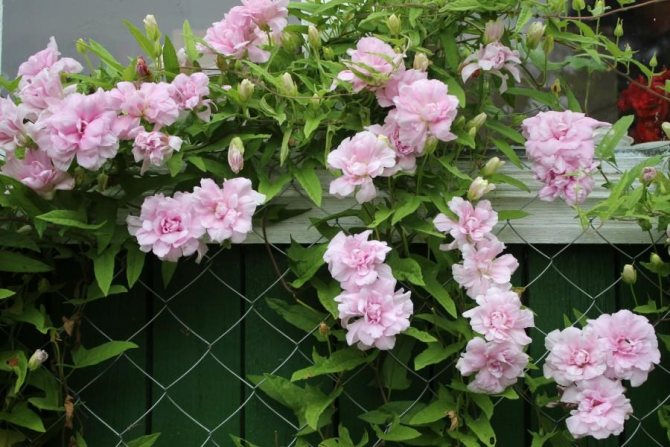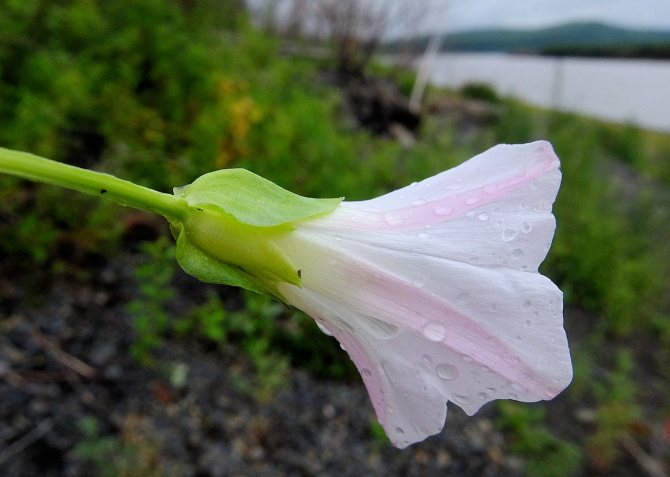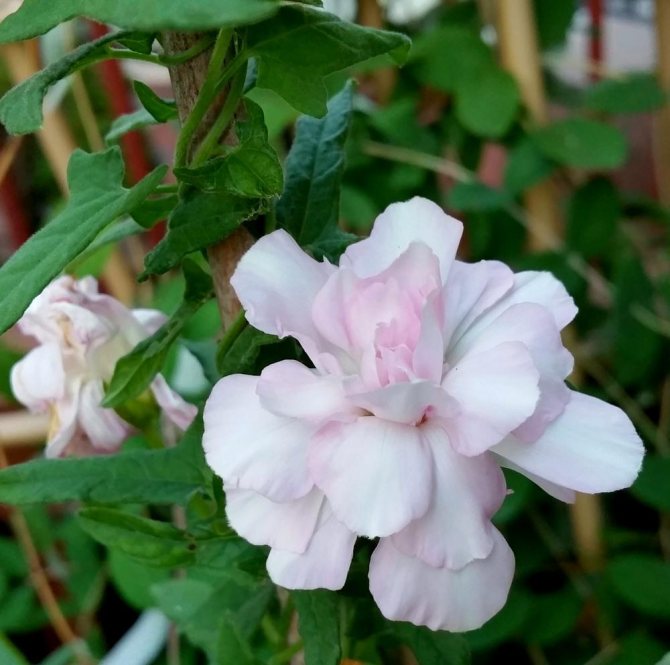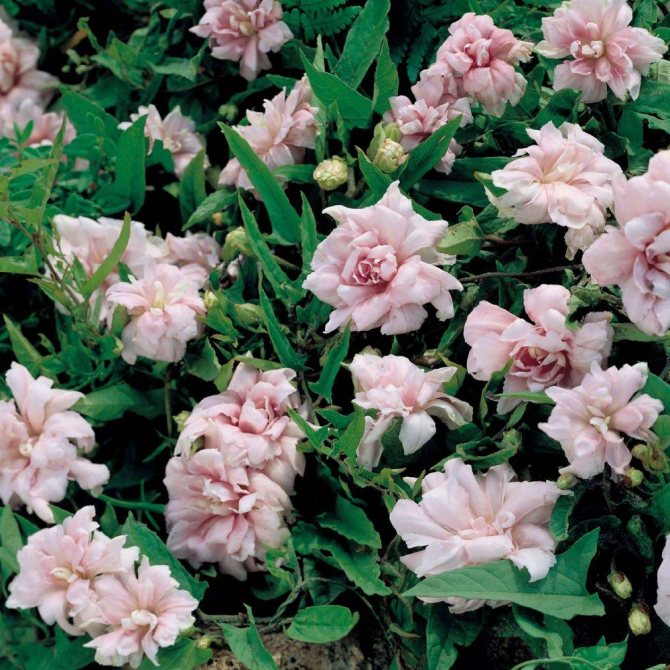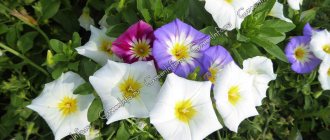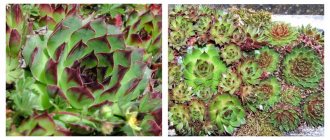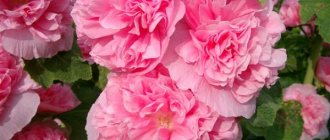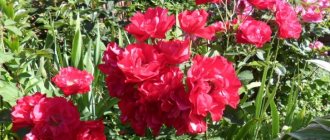Kalistegia is a gentle climbing plant of the Bindweed family. It is also known under the names povoy, bindweed, birch, French rose. The native land of the plant is East Asia (Japan, North China). Sometimes the owners of the plots treat Kalistegiya as a weed that is difficult to get rid of, but it can be turned into a good ally by protecting the rhizome. The fast-growing liana easily braids gazebos, balconies, walls or fences, and delicate flowers bloom over the bright greenery.
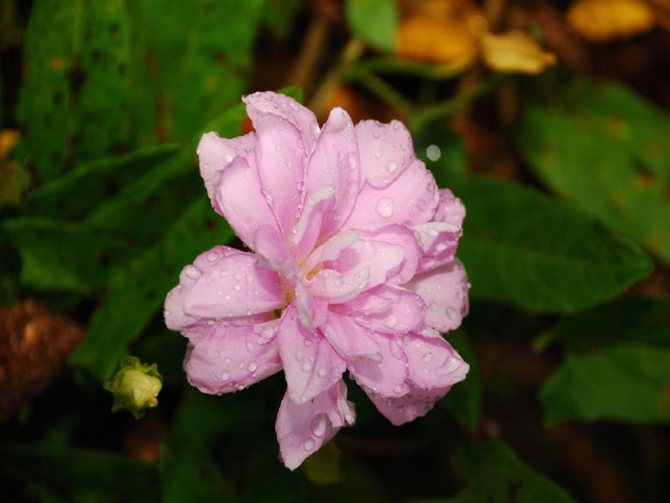
Calistegia is a faithful assistant in landscaping and decorating unsightly buildings. Gardeners will love this plant for its ease of care and decorativeness.
Calistegia landing
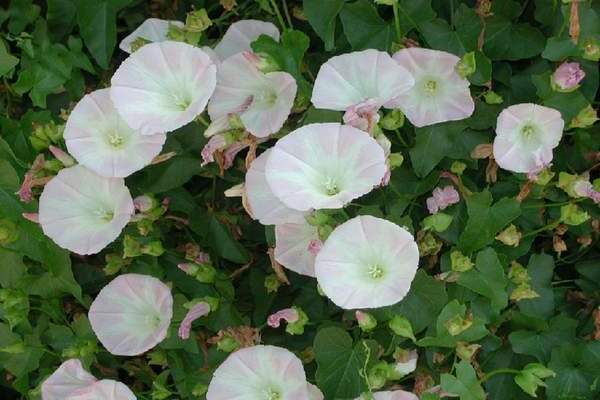

Calistegia is perfectly adaptable and can grow without your participation. But if you take care of her, you will get an even more beautiful plant that develops quickly and constantly blooms. When choosing a place for a calistegia, you will first of all be guided by the location of the support along which it will curl. Make sure that the place is well lit: the more sunlight there is, the brighter and more abundant the bloom will be. Calistegia can grow in the shade, but in this case it will bloom later, the flowers will be smaller and less bright. Almost any soil is suitable, but there is also a pattern here: the lighter and more nutritious the soil in which you plant the plant, the longer it can grow in one place. In a well-lit place on light and loose soil, Kalistegia can bloom for more than a dozen years.
The beauty of bloom
Terry kalistegia blooms in July and throughout the summer pleases the eye with unusually beautiful flowers, similar to small roses. Their diameter ranges from 5 to 7 cm. The bush is completely covered with them, the greenery is almost invisible.
To make the flowering last longer and the plant to look attractive all season, the wilted flowers are cut with pruning shears. What stimulates the formation of new buds.
The plant is not suitable for cutting, as the flowers wither quickly. They close at night and before rain.


Calistegia ivy ‘Multiplex’
Calistegia care
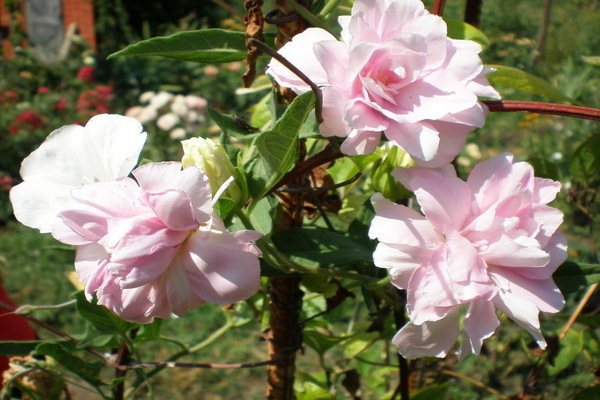

Calistegia is not a very moisture-loving plant, and if a severe drought has not occurred, then additional watering is not required for it, natural precipitation will be enough. If the summer is dry and hot, then be sure to water the vine so that it does not lose its decorative effect. Fertilizers must be applied throughout the spring-summer period, since flowering takes a lot of energy from the plant and it needs additional nutrition. As a top dressing, you can use complex fertilizers for flowering plants or organic fertilizers that you have at your disposal. Perform sanitary pruning periodically, removing damaged shoots and controlling the density of the vines. Cut off wilted flowers regularly to stimulate the formation of new buds. Carry out all garden work with sharp tools, having previously disinfected them.
Popular types
In total, 25 varieties of calistegia are registered in the genus, but only a few of them are domesticated and cultivated purposefully. The rest of the species are considered weeds.
Calistegia is fluffy. The plant is widespread in China and has the longest shoots (up to 4 m). The stems are covered with bright green elongated leaves with a leathery surface. There are varieties with simple and double flowers with a diameter of 4-9 cm. The petals are pink with a dark base. The most popular variety is Calistegia flora captivity. Its large double flowers are often called the French rose for their resemblance to the prickly beauty. Delicate buds with a subtle aroma densely cover the entire surface of the vine.


Calistegia fluffy
Intake calistegia. This variety is very common in many regions and is considered a weed plant. Long and very thin shoots are rarely covered with alternate petiole leaves and simple bell-shaped flowers. White or light pink petals grow together into a solid funnel with a diameter of 1-4 cm.
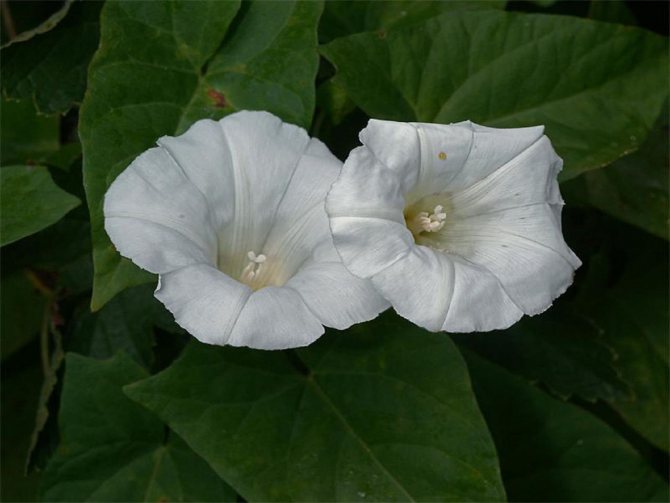

Intake calistegia
Calistegia multiplex. The frost-resistant plant forms shoots up to 3-3.5 m long. Dark green triangular leaves and double pink flowers are located close to each other. Each flower can be up to 10 cm in diameter.
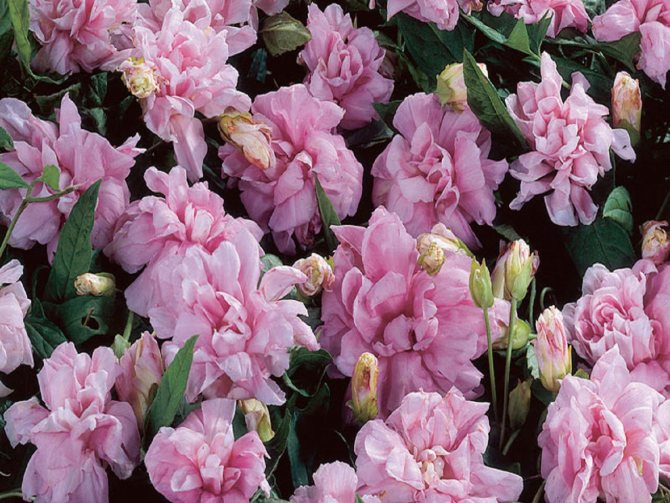

Calistegia multiplex
Ivy or Japanese calistegia. The flower forms elastic strong lashes 1.5-2.5 m long. Small successive leaves and light pink double flowers with a diameter of up to 9 cm are located on them. Flowering occurs in July-September.


Calistegia ivy or Japanese
Calistegia hairy. Liana is common in the south of the Far East. It has a long cord-like rhizome and thick, erect shoots up to 80 cm long. The plant curls weakly. Oblong, petiolar leaves are light green or yellowish in color. Axillary flowers on short pedicels are 4-6 cm in diameter. Corolla consists of five pink petals fused at the base with pointed edges. Blooms in the second half of summer.


Calistegia hairy
Calistegia reproduction


Calistegia is propagated by root shoots, of which, in the process of growth, it forms an incredible amount. Thus, in order to get a new plant, you need to carefully separate such a process and plant it in a previously prepared place, watering abundantly after that. Such a procedure can be carried out from spring to October, since the transplanted plants must have time to take root and adapt in a new place, and with a later planting, they may not have time to build up the root system and die from frost.
Botanical description
Kalistegia is a herbaceous perennial with a developed root system. Dense whitish roots can occupy a large area. In spring, new shoots appear at a distance of up to 1.5 m from the main curtain. Smooth and flexible vines can grow up to 2-4 m in length. They are covered with a reddish brown skin.
Triangular or heart-shaped leaves with long petioles are arranged alternately along the entire shoot. They have wavy sides, a pointed edge and an embossed pattern of veins on the surface. The color of the leaf plate is dominated by a bright green color.
During the summer, flowers bloom along the entire length of the vines. Single axillary buds are colored white or pink. There are varieties with simple (bell-shaped) flowers or with double buds. The diameter of the flower is 2-9 cm. Thin delicate petals surround the core in the form of a column. After pollination on kalistegia, the fruits ripen - small boxes with seeds.
In autumn, the shoots dry up completely. Only the rhizome remains alive, which will sprout new shoots in the spring.
Transfer
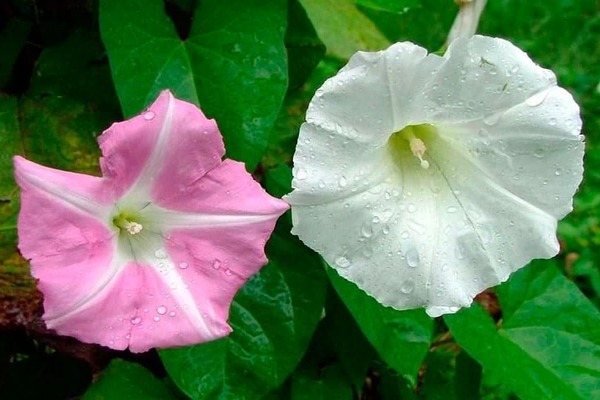

If you are planning to transplant the calistegia to a new place, then in the summer it is impossible to do this in any case - all the forces of the plant are directed to flowering, so rooting may not occur and the calistegia will die.The best time to move to a new location will be autumn, when flowering ends. Liana must be cut off and then transplanted. Work must be carried out no later than a month before the onset of frost. When choosing a place for calistegia, keep in mind that it is actively growing and is capable of suffocating the plantings located nearby. Therefore, either plant it alone, or remove the root shoots in a timely manner.
The choice of planting material
When choosing cuttings of kalistegiya, it is necessary to pay attention to the freshness and firmness of the stem and roots. This type of lianas reproduces vegetatively. Even a small part of the root system with a size of 6 cm or more is suitable for planting in the ground. Therefore, the size of the cutting is not important when choosing a planting material.
Even in the absence of a root system, the stem can be moistened with a special rooting solution and planted in a greenhouse. After a while, the calistegia will take root.
A variety of varieties will allow you to create a beautiful design composition in the garden or at home.
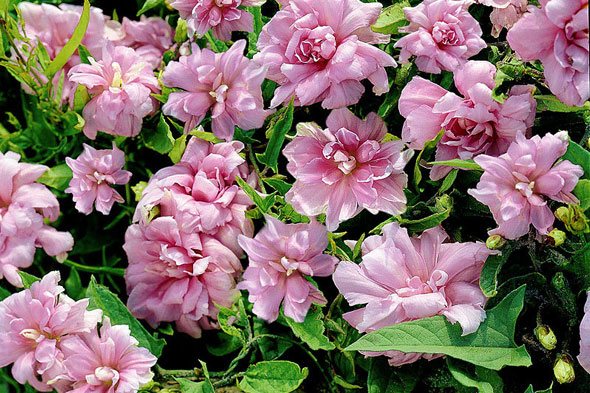

The bindweed grows quickly, if it fills the extra areas, it easily breaks out, due to the location of the roots at a depth of 30 cm.
To make the calistegia more likely to take root, it can be lowered into the water before planting. The cuttings are saturated with moisture and will be suitable for planting.
Possible problems and solutions
But, despite the unpretentiousness in the care and the external attractiveness of the plant, there are still some difficulties that cannot be ignored. As we have already said, the root system of calistegia grows very actively, and if it is not controlled, the plant will occupy an ever larger territory. There are two ways to solve this problem:
- Regularly remove root shoots, presenting planting material to all neighbors and acquaintances, and thereby preventing calistegia from spreading throughout the site.
- When planting a plant, dig metal sheets or slate into the ground, thus marking the boundaries beyond which the roots cannot get out.
Another unpleasant factor is that for some reason the calistegia gathers around itself a huge number of slugs and snails. The plant is considered poisonous, but they still eat not only leaves, but also flowers with appetite. To avoid the invasion of slippery parasites, the plant must be regularly treated with chemicals.
Well, the main problem associated with growing calistegia, as we said at the beginning of the article, is the difficulty of acquiring planting material. Otherwise, this plant has no downsides. With minimal care in a very short time, you can grow a gorgeous flowering bush that will disguise an ugly barn or make a new gazebo even more beautiful. This plant has tremendous vitality and, when properly planted (we are talking about defining the boundaries of the root system), will not give you any trouble.
Planting and caring for the "French rose"
Before planting a loach, it is necessary to fill the ground with rotted manure, compost, with a small addition of sand. For 1 square meter, 2 glasses of ash and 2 tablespoons of compound fertilizer are added.
To prevent the plant from "scattering" in all directions, it is necessary to limit its habitat before planting. To do this, a container without a bottom made of iron or plastic is dug into the ground, the height of which is at least 30 cm. A side of 2-3 cm is left above the surface.For the same purposes, pieces of old slate are buried in the ground, tightly applied to each other, forming an underground fence.
The rhizome is planted to a depth of 15 cm in small pieces. One container is placed from 1 to 3 plants. The roots are carefully spread, watered and buried.
The first time after planting, the calistegia must be periodically moistened. In dry weather, do not allow the earthen coma to dry out.Watering is carried out infrequently in moderate doses.
During the summer, 2 additional fertilizing with complex fertilizers Zdraven, Kemira Lux, Baikal are needed at the beginning of regrowth and flowering in a dissolved form. Before feeding, the soil is spilled with water, then with a nutrient solution. So it is better absorbed by the plant.
You should not loosen the soil around the loach, since the roots are located shallow so as not to damage them. To retain moisture, it is better to use sawdust and shavings of deciduous trees as a mulching material. This will help not only "close" the moisture, but also prevent the slugs from reaching the juicy leaves.
After the first frost, the aerial part is cut off.
Disadvantages and advantages of the plant
Despite all the beauty of the plant, its main disadvantage is the active growth of the roots. If part of the root system is not removed in time, the vine will turn into a weed, which will be very difficult to fight. As a weed, it behaves very aggressively, braiding all nearby growing seedlings and does not allow it to develop normally. To do this, it is imperative to fence off the root growth area.
At the same time, kalistegia is great for any vertical gardening, it helps to quickly decorate gazebos, arches, benches, fences. The main advantage of lianas in comparison with other weaving plants: it does not form dense impassable thickets and draws attention to its bright colors.
With proper cultivation and care, liana will be an excellent addition to a plant and flower complex in a city park or garden area.
Calystegia or povoy is a herbaceous vine from the Bindweed family. Translated from Greek, the name of the flower is translated as "cup" and "cover", which is associated with the structure of large bracts. The people also call calistegia a bindweed or a birch. Terry flower varieties are known as French or Siberian roses. A plant native to East Asia. In the wild, it is found mainly in temperate and subtropical climates, there are about 25 species.
Terry kalistegia is ideal for vertical landscape decoration. This flowering vine is popular among gardeners due to its fast growth, unpretentiousness and high decorative effect. The plant is striking in its vitality and endurance. Its powerful roots are capable of spreading over large areas in a short time, like weeds. Therefore, there is often a need to curb the growth of calistegy.
Diseases and pests
They can threaten the health of the culture only during rainy summers accompanied by cold. Slugs that have multiplied from rains become especially at ease, and the possibility of the appearance of powdery mildew and root rot increases significantly.
The former are harvested by hand or caught for beer, the latter are fought with using Fitosporin.
How to plant a crop outdoors
Before planting a plant in open ground, you need to prepare the selected place for these purposes, preferably in the fall, by loosening and adding nutrients such as mineral fertilizers, compost, ash.
Timing
It is recommended to plant in open soil in the spring, in early May.
Technology
To correctly plant a calistegia, you need to perform the following procedure:
- Make shallow holes in the prepared area and moisten them.
- Plant the seedlings, keeping a distance of 5-30 cm between them. If it is necessary to disguise an unsightly wall or structure, then the calistegia should be placed denser.
- Watering.
- Take care of the fence, as the rhizome can grow strongly.
- Establish a reliable support around which the plant can curl unhindered.
Further care will contribute to normal growth and development of calistegia, as well as abundant flowering.


What is the Kalistegia flower
Kalistega is a perennial flower with a highly branched root system.If you do not set fences around the perimeter of the flower bed, young shoots may appear even one and a half meters from the mother plant (Figure 1).


Figure 1. Calistegia is also called the "Siberian rose" for its amazing hardiness
The culture has long, curly stems that can grow up to 4 meters in length. The bark is brown. Bright green leaves are attached to the stems on long stalks. This crop has a very long flowering, which is why it is often grown on balconies.
Perennial features
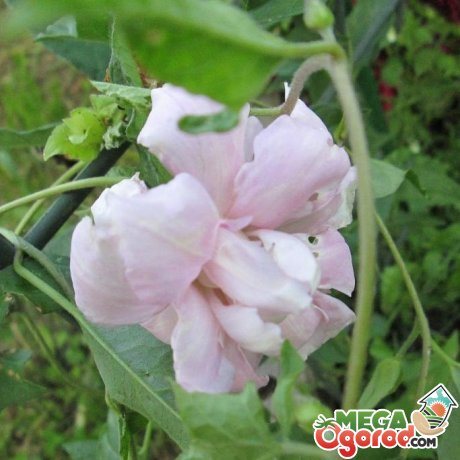

The plant is used mainly for landscaping vertical surfaces. It will help you quickly and beautifully arrange fences and unsightly walls on your personal plot.
The main advantages of calistegia:
- The plant is not yet very common in the world of gardening, so calistegia attracts attention with its originality.
- The flowers have a very beautiful pink hue, which looks spectacular against the background of green vine stems.
- Flowering lasts a rather long period - from July to September, so the kalistegia will adorn the garden for almost the entire summer period.
- The plant is unpretentious and easy to care for.
- The rapid growth of calistegy will be able to implement all design ideas for landscaping the site in the shortest possible time.
Kalistegia loves light areas very much. Thanks to the light, flowering begins earlier and does not end longer. You can plant the plant in partial shade, but it is important to understand that the growth will be worse.
Since the plant can grow up to three meters per season, it is worth prudently taking care of an underground barrier that will prevent the calistegia from overgrowing. To do this, it is enough to plant the plant in a container without a bottom, which should be at least forty centimeters deep. Before planting, the soil must be loosened, it must pass water and oxygen well. In addition, it is advisable to install supports, thanks to which the plant will grow. This can be ordinary wire or mesh, the diameter of which should not be more than ten centimeters.
Calistegia in landscape design
A culture planted in boxes can decorate a balcony or a terrace, and the weaving of the most ordinary-looking building with it can ennoble its outline to the level of royal splendor. Celebrating an outstanding event in a gazebo decorated with povoy will also look more magnificent if its flowering is timed in advance to a certain time.
But for bouquets (due to the need for the stem for support), calistegia is not suitable. You should also not "breed" it in a flowerbed or in another similar place - "crawling" into the ground, it will grieve the owners of the site for many years with its "arrogant" appearance, which was not planned here in any way.
Calistegia in the photo:
Beneficial features
Representatives of the Kalistegiya clan are actively used by traditional healers from China for the manufacture of medicinal drugs. In their opinion, the foliage and stems of the plant have useful properties, and tinctures, decoctions based on them help:
- normalize body temperature indicators;
- get rid of long-term constipation;
- quickly heal wounds on the skin;
- return high-quality and healthy sleep;
- quickly remove excess fluid from the body.
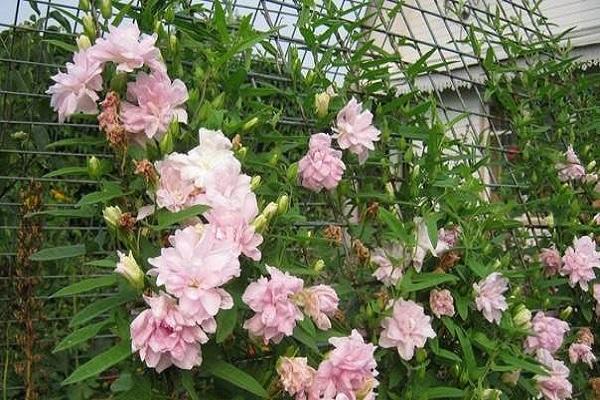

Kalistegia belongs to poisonous plants and is used only for decorative purposes, its ingestion is strictly contraindicated. It is not used in formal medicine or other industrial sectors.
Bindweed cultivation
Calistegia has no problems with reproduction. Even from a small piece of root, a vine will grow. Therefore, ornamental plant varieties are propagated by root division. If the plant does not tolerate the winter cold, the root is dug up, placed in a box, sprinkled with soil and stored until spring planting. In winter, the soil is moistened.
When planting, the root is divided into pieces.In the place where the slices are treated with crushed activated carbon tablets or crushed charcoal. Planting depth - 3 cm. These pieces of root are planted in peat cups and watered abundantly. When the development of poyev begins, the tops are pinched. This will make the bush thicker.
In the second half of May, these bushes are planted in the place where you want to see the beautiful liana. Remember to keep the roots from sprawling.
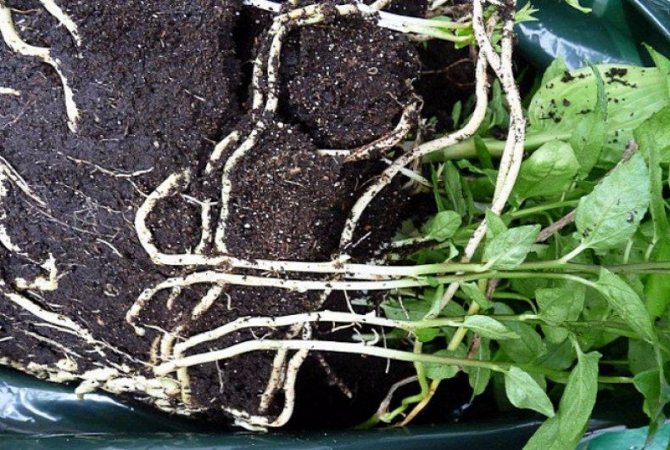

Watering
Terry calistegia, the photo of which is given in the material, is a drought-resistant plant. And she has enough groundwater and rainfall. But if the summer turned out to be hot and dry, then occasionally water the flower.
Young seedlings in the first year after planting need more frequent irrigation, because their roots are still not strong enough and do not draw moisture from the soil. Therefore, moisten the soil as it dries. But do not get carried away with watering, because young plants will die from stagnant moisture.
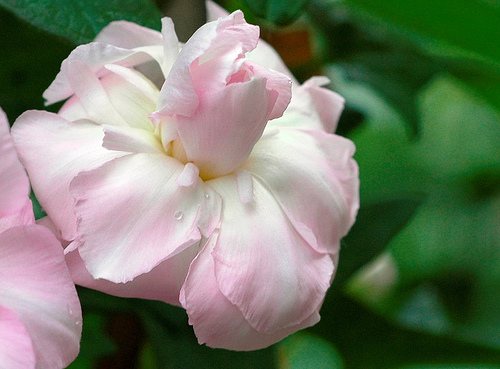

When the terry calistegia blooms
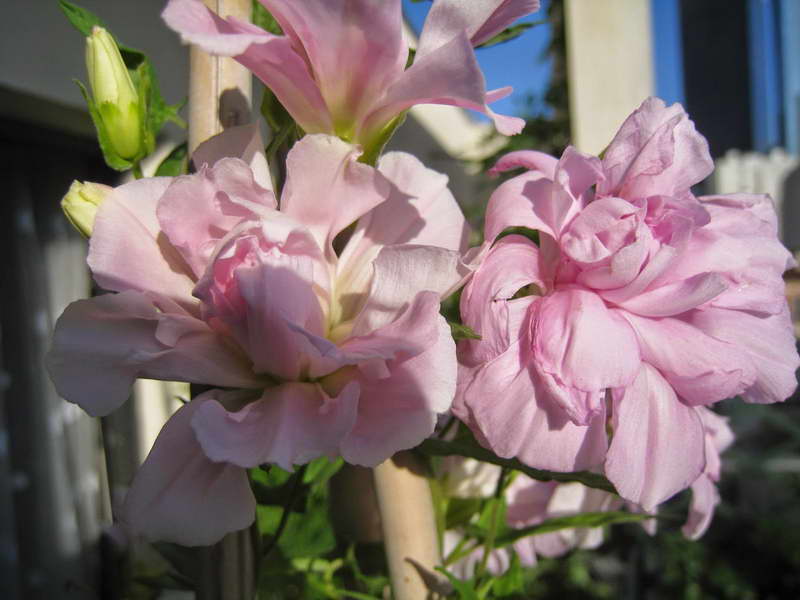

Kalistegia or Siberian rose when blooming photo of flowering
It is not for nothing that the terry calistegia is compared to a rose: its blossoming buds really look like roses, but not so dense and strict, but fluffy, airy. The advantage is that flowering occurs from the first year of growth. The buds form in the leaf axils. You can safely say: how many leaf plates, so many flowers will bloom throughout the season.
Kalistegia blooms from July, if planted in a sunny area. Shade can shift the beginning of flowering to August. The plant blooms continuously until the first frost.
Colors: white, pale pink, lilac. Corollas can be simple or double, the diameter is 2-9 cm. At the end of flowering, a fruit-box is formed.
So you know
The most famous representative of bindweed in culture is the "sweet potato" sweet potato (Ipomoea batatas). It is cultivated throughout the humid tropics. Sweet potato tubers taste good, are higher in calories than potato tubers, and are considered healthier.
In China, fence calistegia is used for food - yes, yes, the same calistegy that grows here. Its white filamentous roots turn out to be not only edible, but also tasty. If you boil them and then fry them, then it will quite pass for asparagus.
How to properly care for a plant
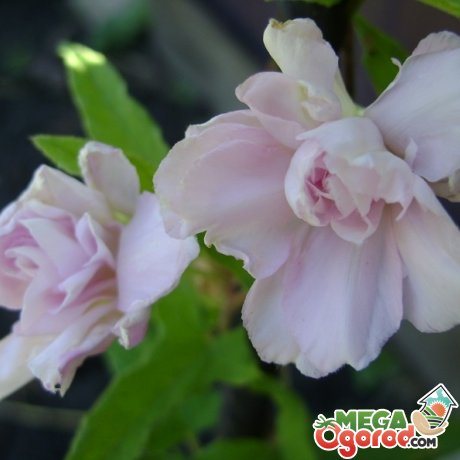

Loose garden soil with a high nutrient content is suitable for growing the plant. Kalistegia is afraid of excessively wet soil, so there should be no nearby groundwater on the site. The obvious advantage of kalistegia is the ability to bloom in the first year of planting.
Care Tips:
- It is important that there is sufficient ventilation in the planted area and the soil is oxygen-permeable. Watering should be moderate. The plant may well survive a short-term drought.
- The whole care of calistegia consists in the timely collection of dried flowers. This must be done every ten days, because dried inflorescences spoil the appearance of the plant and interfere with further flower ovaries. In addition, it is important to thin out the vines and guide their growth, creating a neat shape.
- Calistegia can grow in the same place for up to ten years. That is why it is advisable to feed the plant quite often - once a week. For this, the usual complex mineral fertilizer is suitable. Ash top dressing is also good. In the summertime, you can feed the calistegia with a mullein. The plant reacts very well to fertilization, the vines begin to grow before our eyes, and the flowering becomes thicker.
- Kalistegia is a winter-hardy plant. As a rule, in winter, its stems die off and wake up with the onset of warm weather. For wintering, the plant can be covered with dry foliage or moss. However, this should be done only during severe and not snowy winters.
- Calistegia cannot be transplanted in the summer, as it may die during the period of active development. Autumn is a good time to transplant. As a rule, calistegia should be transplanted every ten years. It is important to take into account that the plant can grow strongly and absorb nearby growing flowers, so you should not place it near flower beds and front gardens. The roots of the plant are immersed in the ground to a depth of about 15 cm; up to three plants can be used per limiting container. The roots must be carefully straightened, moistened and buried in earth.

